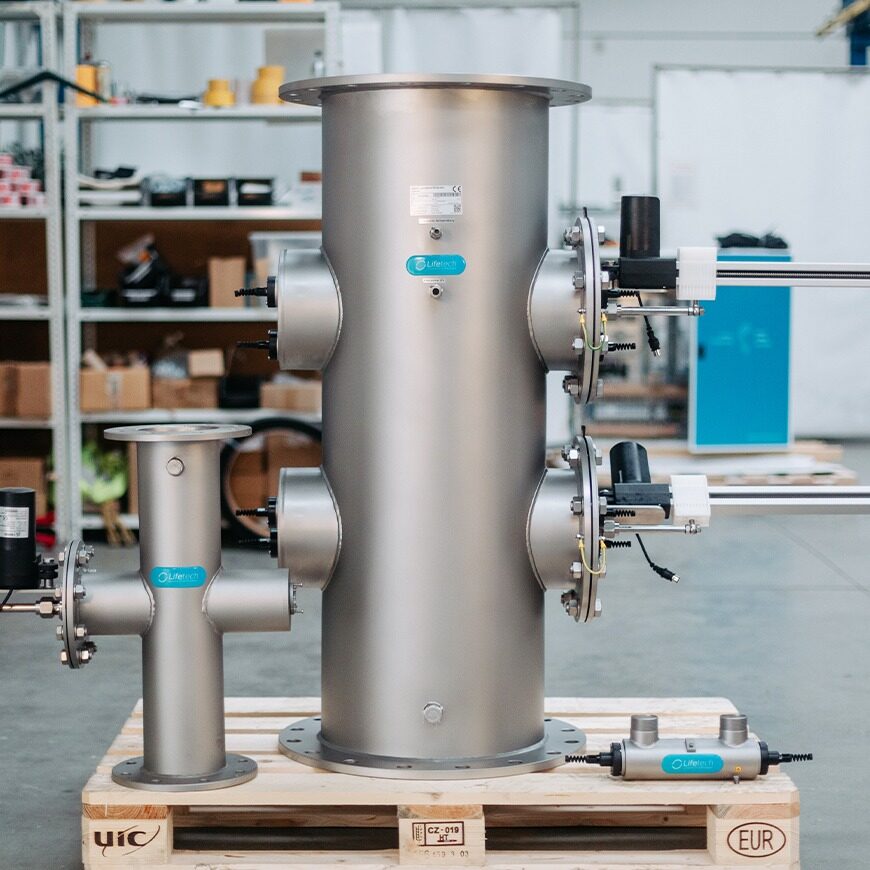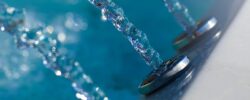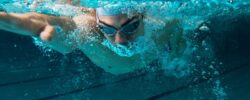LifeOX® M and Medium-pressure UV systems reduce the risk of pool hall collapse
LifeOX® M and Medium-pressure UV systems reduce the risk of pool hall collapse
The pool hall environment is one of the most aggressive environments that can be found inside buildings. This is due to the high humidity and temperature inside the halls and the presence of chloramines, especially trichloramine in the air of the halls. Chloramines are formed in pool water as a by-product of chlorination, which is used to disinfect water. Swimmers mainly bring sweat and urine into the pool water, which react with chlorine to form mono-, di- and tri-chloramines. Of these, Trichloramine is the most harmful. Because it is sparingly soluble in water, it is easily released from water into the environment. The more different attractions with splashing and turbulent water, the more chloramine is released into the pool halls.
The temperature inside the pool halls is usually 1° C higher than the water temperature in the pool. High humidity leads to condensation in places with lower temperatures. Above all, this process occurs at night. Subsequently, water may evaporate from these places, resulting in the formation of chlorides that cause corrosion. Condensation and corrosion are usually in places that cannot be seen.

In 1985, 12 people died in Uster, Switzerland, when the concrete roof of a swimming pool fell on them after only thirteen years of use. The Federal Institute for Materials Testing, based in Dübendorf, Switzerland, and the Federal Institute for Materials Research and Testing in Berlin concluded that the collapse was the result of chloride-induced corrosion cracking. The same reason caused the collapse of the following pool halls:
Uster indoor swimming pool – Zürich, Switzerland, 1985
Steenwijk municipal pool – Steenwijk, The Netherlands, 2001
Transvaal park – Moscow, Russia, 2004
Dolphin pool complex – Chusovoy, Russia, 2005
Zwembad Reeshof swimming pool – Tilburg, The Netherlands, 2011

For the above-mentioned reasons and from the point of view of health, it is necessary to design the technology of treatment of pool waters so that the concentration of bound chlorine and especially the concentration of Trichloramine in the water is minimal. Therefore, the German DIN 19643 norm recommends the installation of medium-pressure (not low-pressure) UV systems in the technology, which, thanks to their polychromatic UV spectrum, effectively remove all three chloramine components, i.e. mono-, di- and tri-chloramine. LIFETECH has developed the advanced LifeOX®M oxidation technology, which removes all these unwanted compounds from pool water even more effectively.
It might interest you
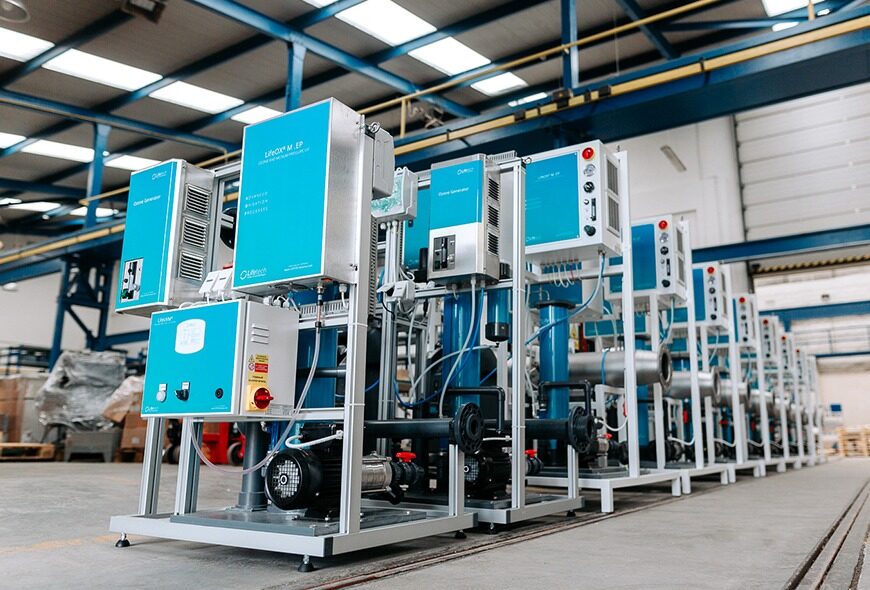
Why is Lifetech’s unique technology LifeOX® M the best available technology for pool treatment
Technology
LifeOX® technology provides the highest possible oxidation potential within AOP
Technology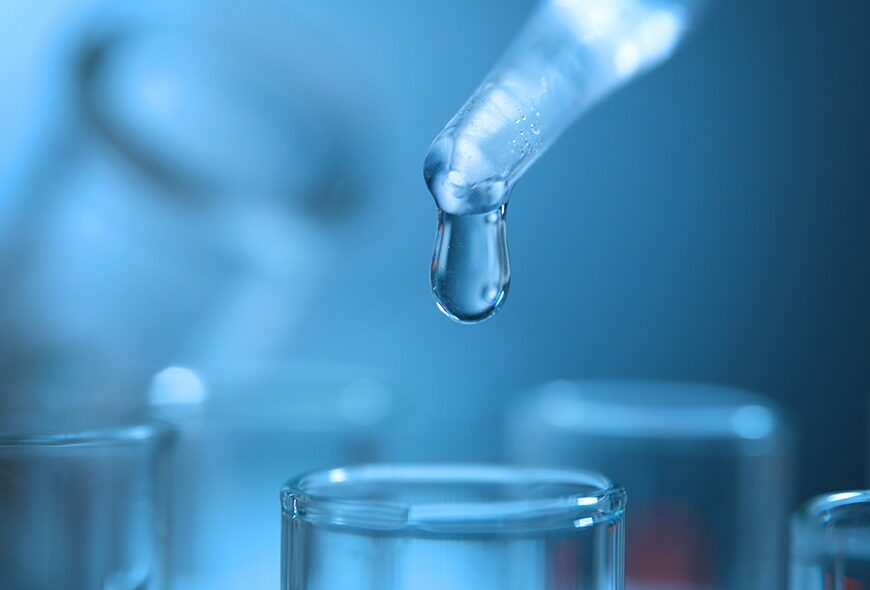
Swimming pools and their health risks: what is not talked about and how to prevent the risks
Healthy pool